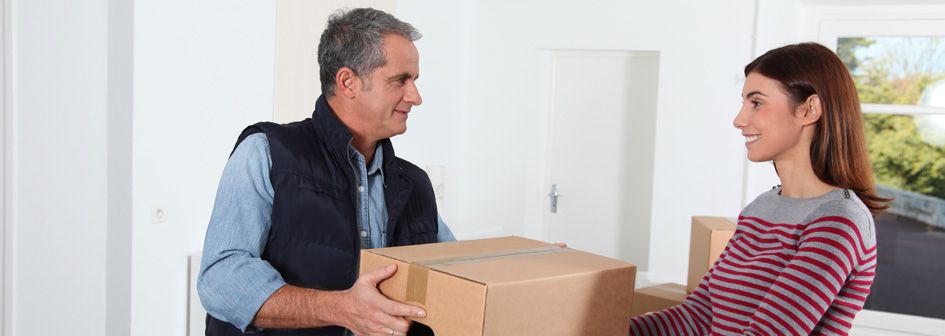Avoid the Pitfalls of DIY Piano Moving with Expert Assistance
Posted on 07/06/2025
Avoid the Pitfalls of DIY Piano Moving with Expert Assistance
Your treasured piano isn't just another piece of furniture; it's a delicate, finely crafted instrument, often of significant value--both sentimental and monetary. Moving such a large, intricate item might seem like a tempting do-it-yourself project, but the risks and potential consequences far outweigh the cost-saving allure. In this comprehensive guide, discover why relying on professional piano movers is crucial and how obtaining expert assistance helps you avoid the pitfalls of DIY piano moving.
Why DIY Piano Moving Seems Tempting
When the time comes to move, whether relocating across town or just rearranging your living space, the thought of moving your piano yourself may cross your mind. After all, with some friends, a few moving straps, and a bit of muscle, what could go wrong? Unfortunately, the answer is--quite a lot.
- Cost Savings: Several homeowners believe moving a piano without professional help saves them money.
- Immediate Action: The ability to control the moving schedule and pace may appear convenient.
- Pride in DIY Accomplishment: Some may relish the challenge of successfully moving a massive and complex item.
While these points are understandable, they often overshadow the hazards and complications associated with attempting a do-it-yourself piano move.

The Hidden Risks of DIY Piano Moving
1. Pianos Are Incredibly Heavy and Awkwardly Shaped
Pianos are wonders of engineering, comprising thousands of moving parts and intricate woodwork. Standard upright models can weigh between 300 to 500 pounds, while grand pianos may tip the scales at 1,000 pounds or more. Their awkward shape and weight distribution make them much harder to handle than most other household items.
2. Risk of Irreparable Damage
The delicate internal components of pianos--the strings, hammers, and soundboard--can be knocked out of alignment or permanently damaged with a single bump or jolt. Damage during a move, even if not immediately visible, can result in costly repairs or even ruin the instrument entirely. Scratches, dents, or splintering in the piano's wooden finish can also deeply reduce its value.
3. Personal Injury Hazards
- Crushed fingers and toes from dropped pianos or pinched hands during maneuvering.
- Back injuries resulting from lifting beyond your limit or improper technique.
- Trip-and-fall accidents caused by awkward carrying positions, slippery surfaces, or narrow passageways.
Medical bills and personal pain from injured backs, broken bones, or muscle strains far outweigh any perceived savings.
4. Property Damage
Walls, doors, staircases, flooring, and banisters are prime targets for accidental scuffs, gouges, and scratches during a poorly managed DIY move. The cost to repair or repaint these areas can quickly surpass the cost of hiring expert movers for your piano transportation needs.
5. Damage to Relationships
Relying on friends or family to help with piano moving can strain relationships, especially if something goes wrong. A dropped or damaged piano could lead to emotional and financial fallout that lingers long after the move.
What Makes Piano Moving So Challenging?
Moving a piano isn't just about brute strength; it requires specialized equipment, detailed planning, and considerable finesse.
- Weight Distribution: Pianos are top-heavy, making them easy to tip over unexpectedly.
- Delicate Feet and Legs: Grand and upright pianos often have fragile legs and castors prone to snapping off during improper lifting.
- Sensitive Internal Mechanics: Jarring movement can disrupt the soundboard, strings, or keys, leading to loss of sound quality.
- Narrow Hallways and Tight Corners: Pianos frequently must be carried up or down stairs and maneuvered around tight angles.
- Climate Sensitivity: Sudden exposure to extreme temperatures or humidity can warp wood or de-tune your piano.
It takes years of training and practice to become proficient at safely moving a piano. By attempting a DIY move, you risk not just the instrument, but also your health and home.
The Advantages of Expert Piano Moving Assistance
Specialized Equipment for Safe Transport
Professional piano movers use tools specifically designed for the task, ensuring optimal safety and efficiency:
- Piano Dollies: Heavy-duty wheeled platforms designed to securely hold and maneuver heavy instruments.
- Moving Straps and Harnesses: Provide grip and support, reducing the strain on movers and minimizing slippage.
- Custom Padding and Blankets: Protect the finish and outer shell from scratches, nicks, and dents.
- Skid Boards: For grand pianos, these support the piano's body and legs during transportation and make it easier to move up or down stairs.
Expertise and Experience
Professional piano movers understand the intricacies of various piano types. From upright spinet pianos to massive concert grands, experienced teams have handled it all. They know the proper disassembly and reassembly processes and understand how to minimize vibration and jarring impacts.
Insurance Coverage
Unlike a DIY move, reputable piano moving companies are fully insured. This means that in the unlikely event of accidental damage, you're protected financially. Your peace of mind is well worth this additional layer of security.
Efficient Problem Solving
Expert piano movers have seen and solved nearly every conceivable moving scenario, from tight stairwells to abrupt weather changes and unexpected obstacles. Their adaptability is an asset that greatly reduces the chances of disaster on moving day.
How to Choose the Right Professional Piano Movers
Don't entrust your valuable instrument to just any moving company. Here's what to look for when selecting expert piano movers:
- Specialized Experience: Confirm the company has a track record of successful piano relocations, rather than simply moving general household items.
- Licensing and Insurance: Ensure the company is fully licensed and insured for added protection.
- Positive Customer Reviews: Read testimonials and check for a solid reputation within your local community.
- Clear Pricing: Request a detailed, written estimate that outlines all costs with no hidden fees.
- Professionalism and Communication: Choose a mover who is responsive, knowledgeable, and willing to answer all of your questions.
Preparing Your Piano for Professional Moving
Although expert piano movers handle most aspects of the relocation, a few preparatory steps on your end can ensure a smooth process:
- Clear the Pathways: Remove rugs, furniture, and obstacles from the intended moving route ahead of time.
- Secure Small Parts: If you have a grand piano, remove and safely store the music rack or other detachable components beforehand.
- Notify Movers of Unique Challenges: Let your movers know about any tight stairwells, narrow doorways, or particularly fragile areas in advance.
- Protect Floors: Mention if you have sensitive hardwood or soft flooring to ensure adequate protection during the move.
Communication is key. Your movers are experts, but you are the expert on your home's unique layout. Share as much information as possible to ensure a seamless process.
Common Mistakes in DIY Piano Moving
1. Underestimating the Weight and Bulk
Many underestimate just how heavy and bulky a piano really is. This leads to using insufficient manpower or the wrong equipment, increasing the risk of injury and damage.
2. Inadequate Planning
A lack of planning results in surprises--discovered too late. Measuring doorways, hallways, and staircases in advance is essential, as is determining the best approach for moving the piano safely.
3. Incorrect Lifting Techniques
Poor posture, hurried attempts, or improper gripping can result in serious injury and a damaged instrument.
4. Skipping Protection
Forgoing protective pads, wrappings, or securement can cause chips, gouges, or internal disarray, which may not show up until much later.
5. Failing to Re-Tune Post-Move
Pianos almost always need tuning after a move due to the physical jostling and environmental changes. Overlooking this can diminish the instrument's sound quality and playing experience.

FAQs About Professional Piano Moving
-
Q: How much does professional piano moving cost?
A: The cost depends on factors like piano size, distance, number of stairs, and level of difficulty. On average, upright piano moves range from $150-$400, while grand pianos may cost $300-$800 or more for local moves. Long-distance moves are priced higher. Always ask for a detailed quote before committing. -
Q: Will my piano need to be disassembled?
A: Sometimes, yes. Grand pianos usually require removal of the legs, pedals, and lyre, while uprights may need only minor disassembly. Experts will reassemble and securely position the piano in its new location. -
Q: Can moving a piano cause it to go out of tune?
A: Yes, the physical jostling and environmental changes can de-tune a piano. It's best to have your instrument tuned a couple of weeks after it settles in its new location. -
Q: How far in advance should I schedule a professional piano mover?
A: As soon as you know your move date, book your movers. Particularly during busy seasons, scheduling early guarantees availability of expert teams. -
Q: Should I use regular furniture movers instead?
A: While some furniture movers may offer to move pianos, always choose professionals with specific experience in piano moving to guarantee safety for your instrument and your property.
Conclusion: The Value of Expert Piano Movers
Your piano is an investment in beauty, music, and memories. Don't risk its well-being or your own safety by succumbing to the pitfalls of DIY piano moving. The expertise, equipment, and assurance offered by professional piano movers far surpass the fleeting satisfaction of a DIY attempt. Enjoy peace of mind and safeguard your cherished instrument by entrusting experienced, specialized movers with the relocation of your piano.
When you need to move a piano--large or small, upright or grand--discover the peace of mind that professional, expert assistance brings. Choose wisely, move safely, and keep the music playing for years to come.
Ready to Move? Get a Piano Moving Quote Today
Connect with local, trusted piano moving professionals now--your instrument, your home, and your health will all thank you!








